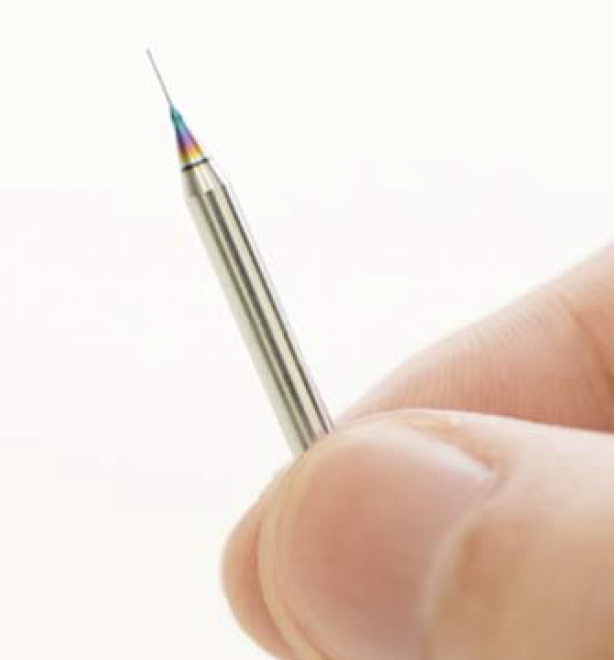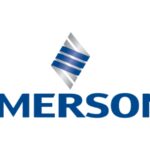ASIA ELECTRONICS INDUSTRYYOUR WINDOW TO SMART MANUFACTURING
Union Tool Makes Difference with Unique PCB Drill
In 2009, Union Tool Co. developed the Union Tool lubricant film (ULF) coating, which dramatically improves the performance of tools for printed circuit boards (PCBs). Since then, the use of ULF drills for high-end boards and routers has increased. In fact in 2020, about 45 million pieces of the ULF film coating were sold annually, an increase of 28 percent from the previous year. This trend continues
in 2021.

This article discusses the ULF coating and application of its superior property to PCB drills.
ULF Coating
Union Tool originally developed the ULF diamond-like carbon (DLC). As shown in Fig. 1, it exhibits an interference color and has high lubricity, preventing the welding of copper and aluminum to the super hard material, which is the base material of the tool. Figure 2 shows an example demonstrating the significant reduction of the cutting torque due to the ULF coating. For a deeper hole in drilling processes, the flow of chips is hindered in the groove. Therefore, the chips arising from an insulating layer are continuously compressed and are changed into large lumps. In the case of small diameter and high aspect-ratio machining, the cutting torque increases and the drill is easily damaged. The ULF coating suppresses this increase in the cutting torque and makes the drill hard to break. In addition, it suppresses the roughness of the inner wall of the hole during drilling and the generation of resin smears.

ULF Drill for High Multilayer Boards
High multilayer boards are becoming more densely packed. Drilling of high multilayer boards is required to handle holes, which become smaller in diameter and higher in aspect ratio year by year. Furthermore, boards require the suppression of transmission loss for high-frequency signals. Thus, board materials tend to be selected from those consisting of low-dielectric glass or fillers. Therefore, the reliability of the through-hole connection has become an important issue as the resin smears can be generated on the inner copper due to the wear of the drill bit and insufficient removal of drilling chips. In many cases this is improved by using ULF coated drills. Figure 3 shows a comparison of resin smears with and without the ULF coating using the same specification drill. The condition inside the drill hole indicates that the ULF coating considerably improves the chip evacuation performance. That is, the ULF coating contributes to the reduction of smears and the improvement of the breakage resistance for high-aspect drills.

Drill for IC Package Substrate Cores
Many through holes with a diameter of φ0.1 to 0.2mm are made in the core of the package substrate. There, the breakage resistance of the drill and the hole position accuracy, or the straightness of the drill and the strength against bending, are very important. The ULF coated drills have been attracting attention in this field since they were brought to market, and the company has been continuously developing drills that take advantage of the characteristics of the ULF coating.
In recent years, there have been many requests for improvement in the accuracy of positions of holes, especially due to the tendency of increasing core thickness in the field of FC-BGA.

Figure 4 shows a comparison of the accuracy of the position of holes between those drilled with the conventional model and the ULF coated new model for FC-BGA cores. Both use the same ULF coating, but the drill shape and super hard material have been improved in the new model, significantly increasing the hole position accuracy compared to the conventional model.
Development of Drill Shape (Parallel Flute Drill)
In 2011, Union Tool established the drill designing method for the parallel flute drill. It has significantly improved the hole position accuracy and the breakage resistance compared to conventional two-flute twist drills. The new drill designing method has become a standard in the field of high-multilayer boards and IC package substrates. Different variations have been devised for the shape of the part where the two grooves on the root side of the drill run side by side. They can be selected according to the base material type and user needs.
Figure 5 shows some typical examples.

Future Outlook
Aside from the fields that were introduced in the article, the ULF coating is also applied to drills for flexible boards and routers for aluminum and copper base boards. It is also attracting attention for applications aimed at suppressing smearing of low-loss layers in antenna boards and increasing board stacking in high density interconnect (HDI) boards. The company will continue to develop tools applied with the ULF coating suitable to market needs.
About This Article:
The author is Yukiyoshi Hoshi, General Manager, First Tool Engineering Department, Union Tool Co.




